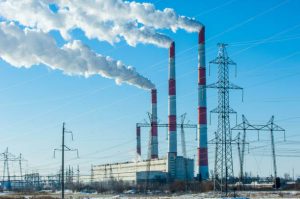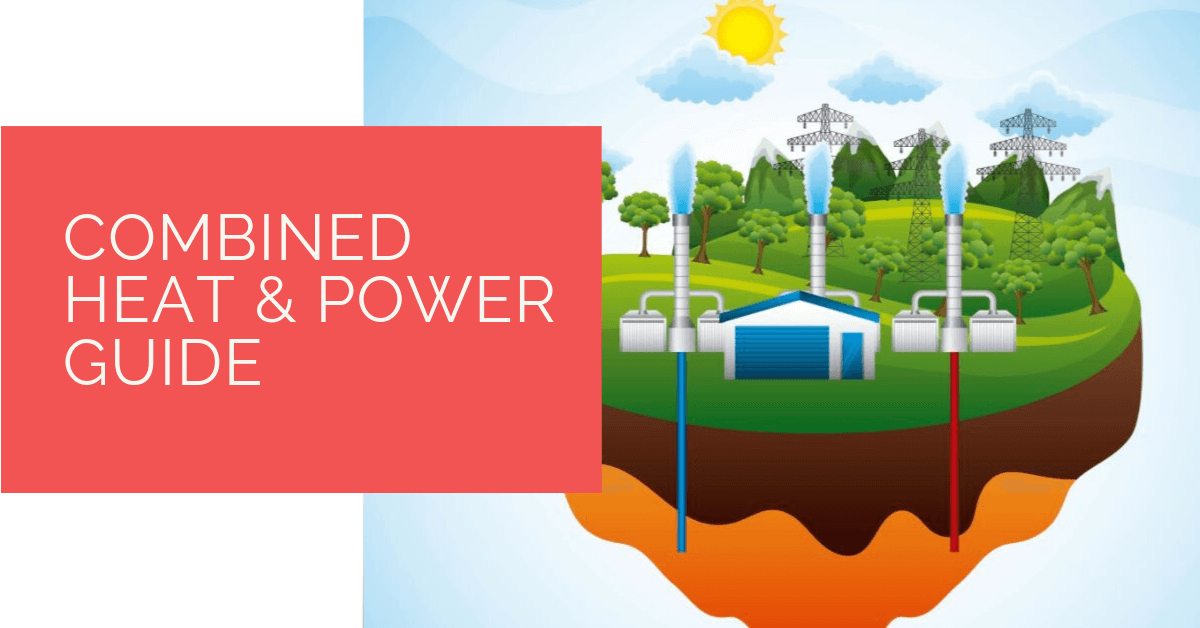Combined heat and power is a unique method to generate electricity and heat using a single fuel source. This method has a low carbon emission footprint compared to the traditional methods of generating heating and electricity, which also results in a comparatively lower energy cost.
Contents
Key Takeaways
- CHP technology uses a single fuel source, often natural gas, to simultaneously generate electricity and heat. It efficiently utilizes waste heat for hot water distribution, resulting in energy savings of around 40 to 45% annually compared to traditional systems.
- CHP offers financial benefits by reducing setup and installation costs, saving electricity expenses, and generating heat and electricity from a single fuel source. It also has environmental benefits, with lower carbon emissions and reduced reliance on natural resources.
- CHP systems achieve high energy efficiency, surpassing 80% overall efficiency and over 50% efficiency when used in on-site boilers. They minimize energy wastage during electricity production and distribution, making them an environmentally friendly choice.
What Is Combined Heat and Power?
The combined heat and power technology use a single fuel source, usually natural gas to produce electricity. This electricity is further utilised with the help of a private wire that is connected to a grid or combines with multiple grids to support the electricity generated.
 One of the reasons why the CHP unit is so popular these days is it uses the waste heat from this process so that it can distribute the hot water via insulated heating pipework. People who want hot water in their building often resort to this method because of its energy efficiency technique. Once the hot water is distributed, the heat returns to its chamber so that the CHP system can reheat it whenever required.
One of the reasons why the CHP unit is so popular these days is it uses the waste heat from this process so that it can distribute the hot water via insulated heating pipework. People who want hot water in their building often resort to this method because of its energy efficiency technique. Once the hot water is distributed, the heat returns to its chamber so that the CHP system can reheat it whenever required.
Traditional systems used comparatively more fuel and energy to produce the same work, but thanks to the single-fuel system, the CHP technology helps to save almost 40 to 45% of the energy annually.
What Are the Benefits of CHP?
Utilising the combined heat and power involves a variety of benefits. They are not only energy-efficient but also helpful for the user and the environment.
1. Financial Benefits
Compared to the traditional systems, the CHP units have a much lower price. With a low set up and installation cost, more users are enthusiastic to give it a try.
Importing electricity separately involves a massive cost every year. But, when people use CHP technology, they can save thousands annually. This system generates electricity with a single fuel. So, the unit only has to important one fuel instead of purchasing electricity also.
Since it generates two energy outputs, heat and electricity, people don’t have to spend on them individually. All they have to do is arrange for the fuel and the unit will do the rest.
People can also send the electricity back into the unit if they want to save further. It will require an additional heating supply, but the money that it saves throughout the year more than makes up for what the user spends on that heating unit.
The fuel used in a CHP engine and the electricity generated from it may be exempted depending on how efficiently the system is running.
2. Environmental Benefits
The wasted heat and carbon emissions are much lower in CHP engines. If someone compares it with a traditional system, the results will be clearly visible. Traditional units use separate heating and electricity plants that result in higher wastage of heat and carbon emissions.
CHP engines go a step further to utilise the wasted heat by distributing it into the water of the building.
With lower carbon emissions, the need to use natural resources is also reduced, which is a huge bonus to the environment.
How Energy Efficient is CHP?
Comparing CHP with a traditional heat and power generation system will help to understand how energy-efficient the combined heat and power unit is. The CHP system is usually installed at places where both thermal energy and electricity is required. If a traditional electricity generation machine is installed in the same place, it will waste almost two-thirds of its energy through the heat discharged during the production of electricity. Moreover, it wastes additional energy during the process of electricity distribution to the users.
CHP systems, on the other hand, works differently. It hardly wastes any energy during electricity production phase. Even if it manages to waste some of it, the system will capture and use the heat so that it can reduce distribution loss. This helps CHP engines to achieve more than 80% energy efficiency and over 50% efficiency when used in on-site boilers.
What are CHP Units / Boilers?
CHP boilers produce both electricity and heat in one process. This technique is often called cogeneration. With the rising price of fuel, more residential apartments are now using CHP boilers to cut down energy costs. CHP boilers not only provide electricity to the house but also supplies hot water by using the wasted heat produced while generating electricity.
What is Micro CHP?
A micro CHP system is a part of CHP boilers. According to the EU Act of Cogeneration, a micro CHP boiler is a system fit enough for domestic purposes, and will have a capacity of 50 kW.
How Does Micro CHP Work?
A micro-CHP has several components such as noise silencers, multiple heat exchangers, and many other parts to make sure it generates electricity and heat without disturbing the users. Usually, these units weigh approximately 750 kg and have dimensions of 1.5 x 1 x 1 meter. Here’s how they work:
1. Since this unit also follow a single fuel system, the machine inputs biomass, oil, natural gas, or coal from one end.
2. The second part is the engine. This is almost the same size as a car engine running on four cylinders. As the fuel enters the engine, it burns by ordinary combustion.
3. Aligned next to the engine is an electricity generator. As the fuel burns in the engine, the electricity generator connected to it operates the engine’s driveshaft.
4. Before producing electricity on a mass scale, the electricity generator manages to create approximately 15 kW of electricity that is used for emergency supply.
5. As the electricity generator starts producing electricity, the exhaust gases created inside the engine flows through multiple heat exchangers. These help to remove a significant portion of the waste heat.
6. Towards the rear end of the system, there is a catalytic converter whose function is to remove the pollution from the wasted gas. This converter is also similar to the one installed in cars.
7. The exhaust gas flows through a chimney or a tailpipe and is emitted outside.
8. Cold water flows into the multiple heat exchangers. The exhaust gas produced by the engine enters the exchangers and exits at a higher temperature that makes the water hot enough for users. Typically, a micro-CHP boiler of this size can produce approximately 40 kW of thermal energy.
What Are the Benefits of Micro CHP?
Micro-CHP is undoubtedly the future, especially when natural resources are slowly coming to an end. With this system, people can stop using tons of fossil fuel and when that happens, it stops adding the carbon dioxide into the atmosphere. This is a massive leap to reduce global warming.
When people use micro-CHP, they are also contributing to lesser air pollution, acid rain, and water pollution. The massive power plants using fossil fuels are not only using enormous amounts of natural resources but also polluting the environment in many ways.
Micro-CHP can successfully replace these power plants. Their size is much smaller compared to the traditional power generation units and it reduces the dependence on centralised energy network. Since micro-CHP can run on a variety of fuels, using biomass will also reduce spending a significant amount on sourcing the fuel. Although many believe that this system is complicated, it still manages to outweigh this drawback with enough chances to save energy in the long run. And, when there is such a golden opportunity to avoid using fossil fuels, people should move forward to accepting this technology for benefiting the environment at large because stopping global warming should be a collective effort.
Heat Pump Source: Reliable Heating and Cooling Solutions
At Heat Pump Source, we take pride in our unwavering commitment to serving the UK with top-tier HVAC solutions. From the efficiency of heat pumps and the cool relief of air conditioning to the warmth of boilers, radiators, and underfloor heating, our dedicated team is always at the forefront of innovation. We understand the unique needs of every household and business, and we strive to provide dependable health and cooling products and services that are tailored just for you. Ensuring your comfort and satisfaction is our utmost priority. Whether you have questions, need guidance, or require support, we’re always here to assist. Please don’t hesitate to contact us; we’re eager to be of service.
Conclusion
Combined Heat and Power (CHP) technology significantly advances energy generation and efficiency. With its ability to simultaneously produce electricity and heat from a single fuel source, CHP offers substantial financial savings, lowers carbon emissions, and reduces our dependence on finite natural resources. Its impressive energy efficiency makes it a promising solution for a more sustainable and environmentally conscious future. As we face the challenges of energy conservation and environmental preservation, embracing CHP and its variants, such as Micro-CHP, is a vital step towards a greener and more cost-effective energy landscape.
About the Author
At Heat Pump Source, our articles are the product of a collaborative effort among a team of highly skilled HVAC experts. Our dedicated professionals, hailing from diverse backgrounds in heating, ventilation, air conditioning, and refrigeration, contribute their extensive knowledge and experience to every piece of content. This multidisciplinary approach ensures comprehensive coverage. Our commitment is to deliver authoritative, reliable, and tailored advice to meet the unique needs of every household and business across the UK.

